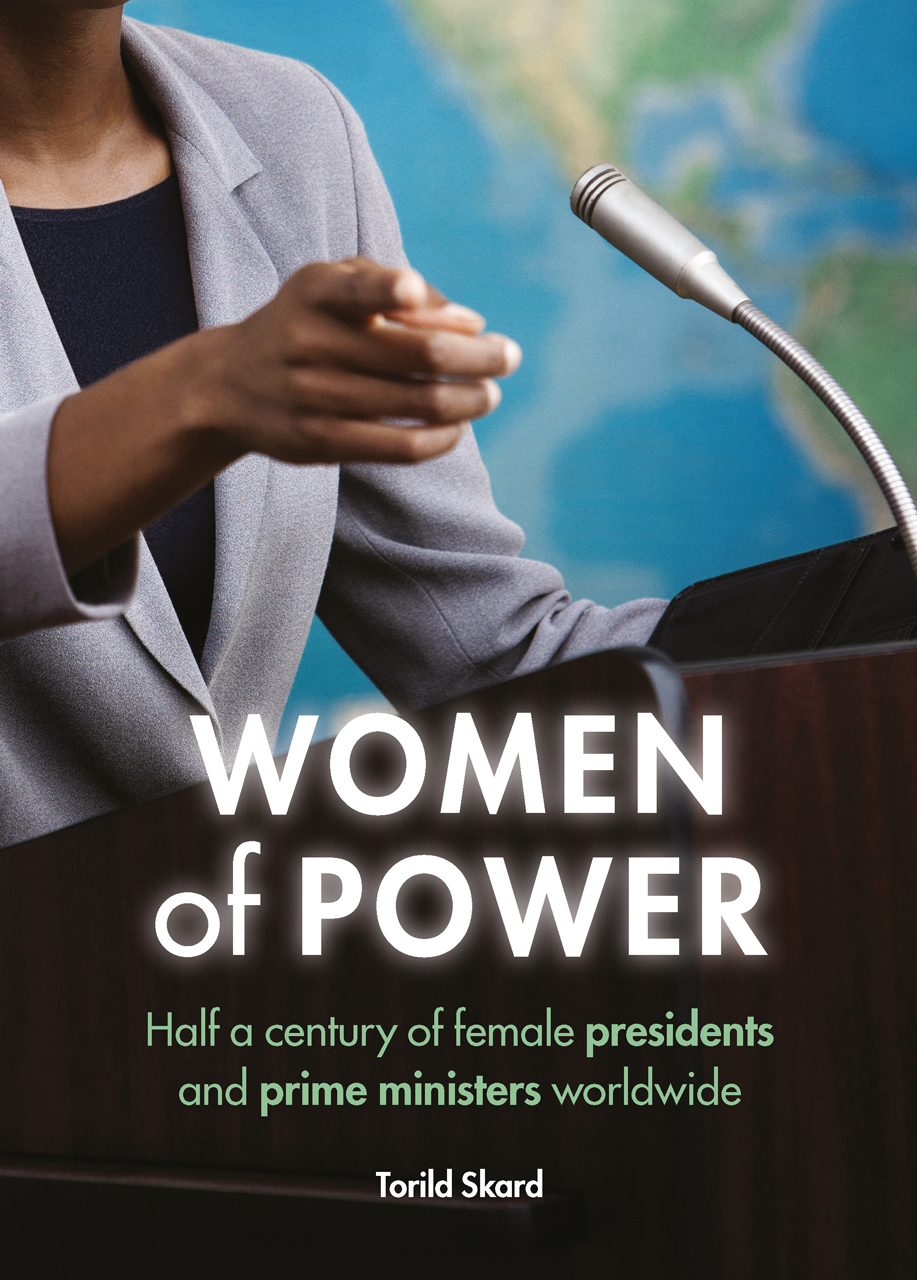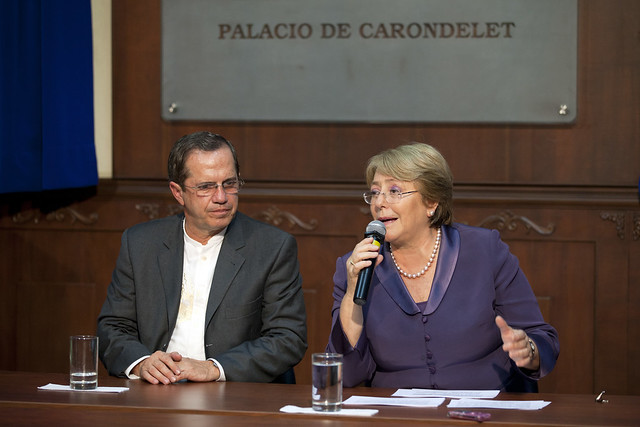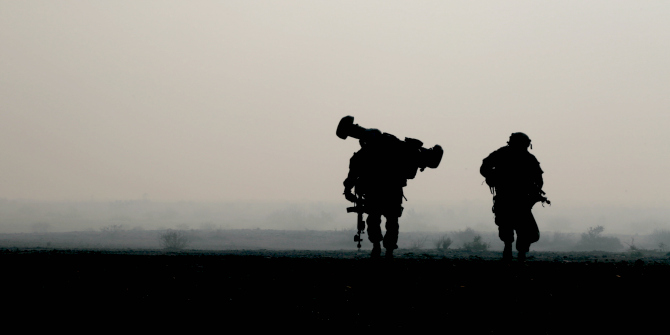Women of Power is an ambitious project, one which attempts to map the contribution of all 73 female presidents and prime ministers across the globe onto the political landscape. Katherine Williams finds this a valuable contribution to the fields of gender studies and political history. Author Torild Skard contributes her own fascinating comments at the foot of the review.
 Women of Power: Half a Century of Female Presidents and Prime Ministers Worldwide. Torild Skard. Policy Press. 2014.
Women of Power: Half a Century of Female Presidents and Prime Ministers Worldwide. Torild Skard. Policy Press. 2014.
Women of Power by Torild Skard – a Norwegian feminist researcher, social activist, first woman president of the Norwegian Upper House, former director of the Status of Women for UNESCO Paris, and former regional director of UNICEF West and Central Africa – is an extremely knowledgeable and conscientious text. Detailing all 73 female presidents and prime ministers from across 53 countries, the text incorporates the history of female leaders into that of the women’s liberation movement which began to gain international prominence from the 1960s onwards.
The emergence of female leaders, it seems, was, and perhaps still is, inseparable from the narratives of ordinary women hoping to get their voices heard on the international stage through their respective organisations. Such grassroots organisation amongst women worldwide culminated in a milestone event: the International Women’s Year World Conference held in Mexico City in 1975; an event Skard recalls with affection and a litany of amusing personal anecdotes.
As I have discussed in previous reviews, it is my opinion that the crux of feminist movements, or waves, has been that old feminist adage, the personal is political. Skard’s own story – her interest in feminism and politics from a young age, her formal education, and experiences as a female politician – contribute to a broad feminist discourse that promotes women’s inclusion in world politics, promoting change from the grassroots upwards.
Women of Power is broken down into ten regional chapters which provide an overview into the history, motivations, and contributions of female leaders across the world. The text also incorporates world developments, discussion of those tricky conceptual and methodological issues that plague any academic project, and a helpful final chapter which breaks down each regional analysis into bite size chunks. Most of the chapters in the text can be read standalone. Skard’s extensive bibliography will also direct students, academics and readers alike onwards to a diverse range of source material for their own research interests.
In her introductory chapter, Skard explains the importance of a work like Women of Power. She makes it clear that whilst the text may fall under the remit of gender studies (which as discipline can focus on women or men, or both), women are its exclusive subject (p. 1). However, Skard states that she does not see women in isolation from men; it is often the case that in the political arena, men (who are overrepresented and tend to hold most power) often play a role in determining the conditions for womens’ participation in political life (p. 2). Whilst organisations such as the United Nations have promoted women’s rights and political change in various regions across the world, Skard’s examination of women leaders offers the reader a comprehensive insight into the dynamics of change; when women reached the pinnacle of power in their respective countries, did they act in the same way as their male counterparts, or did they enact transformative change? (p.2) Ultimately, women are vastly underrepresented and under researched in political life generally, and there is an inherent need for more analysis of women’s political behaviour and opinion; such is the aim of Women in Power.

Two regional chapters that caught my eye were “Machismo, Marianismo and Modernism in Latin America”, and “Eastern Bloc: from Communism to Capitalism”.
“Machismo, Marianismo and Modernism in Latin America” describes how women in the region have transformed the face of international politics post military dictatorship in their respective countries. From Violeta Chamorro, President of Nicaragua after the Ortega regime was ousted, to Michelle Bachelet of Chile, and Cristina Fernández de Kirchner of Argentina, women heralded what Skard describes as a ‘third wave of democratisation’ (p. 205) in Latin American countries.
Machismo values have traditionally dominated Latin American society, as Skard notes, ‘the distinction between private and public was emphasised, and the public (political) sphere was marked by the values of the Spanish conquistadores: physical strength, manliness, and military prowess.’’ (p. 207). Politics in the region was a distinctly male affair; women could only be seen to exert any kind of influence in the home and associated feminine spaces. However, despite the obstacles women faced in asserting their political identities, one event, the aforementioned International Women’s Year World Conference held in Mexico City in 1975, helped women in the region and the world over to participate in democratic mobilisation. Whilst the political gains for women in the region may not have been immediately effective, a forum for women’s voices now existed, paving the way for future women leaders.
Similarly, in “Eastern Bloc: from Communism to Capitalism”,Skard endeavours to map the social changes that were instigated after the disintegration of the Soviet Bloc in the early 1990s. Whilst the Bolshevik Revolution in 1917 should have heralded a new age of equality for women across the region, the reality was that women were further excluded from political spaces, as entrenched patriarchal norms held prominence and posited women in their time-honoured realm, that of the home. Whilst socialist thinking dictates (for want of a better word…) that women are as equal as their male counterparts, this did not correspond to a political reality, especially as totalitarian ideology began to gain its insidious foothold in the region.
Whilst Skard’s analysis of women leader in the former Eastern Bloc is comprehensive and well researched, there is, for me, something of a glaring omission. If Skard intended to write a profile of all female prime ministers and presidents since 1960, then I would expect to see Biljana Plavšić, former president of the Republika Srpska (not to be confused with the Republic of Serbia!) included in the text. As it happens, Biljana Plavšić was indicted by the International Criminal Court in The Hague on charges of genocide and crimes against humanity in 2001. Perhaps Plavšić is not the best poster woman for Skard’s celebration of female leaders, but her presidency, her actions during the Bosnian War, and its impact on the region are arguably still worthy of further discussion.
Another small issue that I encountered with Women of Power was one of a distinctly grammatical nature. The text was translated from Norwegian into English by the author herself, with the assistance of NORLA (Norwegian Organisation of Non-Fiction Writers and Translators). At points I found some sections hard to read because of the resultant changes made during the translation process. Some sentences were either too long, or far too short, and some of the vocabulary used seemed archaic.
All in all, Women of Power is a valuable resource to those who seek an insight in to the struggle women have faced in becoming leaders in their own right. Alongside the life histories of the women in question, Skard offers detailed analyses of political developments and gives brief historical overviews of each region at the beginning of each chapter. My minor observations, I hope, do not detract from the fact that the text is a highly informative, knowledgeable and valuable contribution to the fields of gender studies and political history.
Katherine Williams graduated from Swansea University in 2011 with a BA in German and Politics, and is currently studying for a MA in International Security and Development. Her academic interests include the de/construction of gender in IR, conflict-driven sexual violence, and memory and reconciliation politics. You can follow her on Twitter @polygluttony.








Just to let you know that in the book review of Women of Power, one of the photos included incorrectly identifies Violeta Chamorro. Instead, the photo is of Cristiana Chamorro, daughter of the late Violeta Chamorro.
Thanks Barbara, we’ll update that now!
A reply from Torild Skard:
In her review of my book, Women of Power, Katherine Williams notes “a glaring omission”, as she terms it, as Biljana Plavšić, former president of the Republika Srpska, is not included.
I agree with Williams that the political career of Biljana Plavšić is worthy of discussion. She was politically active in an extremely troubled situation, obtained exceptional positions for a woman and was one of the highest ranking Bosnian Serb politicians to be sentenced by the International Criminal Tribunal for the former Yugoslavia. But the reason why she is excluded from my analysis is not the one Williams suggests: that Plavšić is not “the best poster woman for Skard’s celebration of female leaders”. Plavšić is excluded because the positions she held are not in accordance with my selection criteria, though she is no simple and straightforward case.
My book includes women presidents and prime ministers of independent nation states that are members of the United Nations. Thus colonies, states in a confederation, dependencies and external territories are excluded. Women with the title of “president” or “prime minister” were also excluded if the position is not at the national top level or the women serve jointly with somebody else (see page 3 in my book).
Biljana Plavšić was born in 1930 in Tuzla in what is now Bosnia and Hercegovina. Information about her background is sketchy, but she belonged to a well-to-do Bosnian Serb family and became professor of biology at the University of Sarajevo. She was a leading member of the Serbian Democratic Party and was elected in 1990 as the first female member of the collective presidency of the Socialist Republic of Bosnia and Herzegovina. But she did not become head of the presidency and the republic did not become an independent state: it was part of the Socialist Federal Republic of Yugoslavia.
At the time, the Socialist Federal Republic of Yugoslavia was breaking up. The process was complicated and turbulent. Controversies and tensions were strong and the political crisis escalated into war. When Bosnia-Herzegovina declared its independence, the Serb minority in Bosnia declared its own independent republic. From 1992 to 1995 Republika Srpska was a de facto sovereign entity, but it was not recognized internationally and did not become a member of the UN, though Bosnia, Croatia and Slovenia became members in 1992. Biljana Plavšić left the presidency of Bosnia and Herzegovina and from 28 February to 12 May 1992 she was one of two acting presidents in the new Serb republic. From 12 May she became a member of the three-member presidency of the republic and vice-president, but not head of the presidency.
Following international intervention, in 1995 a peace agreement was signed establishing the State of Bosnia Herzegovina under international military and political administrative control. The state consisted of two “entities”: the Federation of Bosnia-Herzegovina and Republika Srpska. They were represented in the UN by the State of Bosnia Hercegovina and at the national (federal) level the state had a three person presidency. But Biljana Plavšić did not become one of them. She became president of the Republika Srpska entity from 19 July 1996 to 4 November 1998. Thus she was not president at the top level of an independent nation state, and therefore not included in this book.
Sources: see among others http://www.icty.org (website of the International Criminal Tribunal for the former Yugoslavia), http://www.rulers.org and http://www.un.org (member states) in addition to various encyclopedias.
Torild Skard,
Senior researcher and author of Women of Power
Thank you for your insightful comments, Torild. I appreciate that you’ve taken the time to respond to my review. Any oversights in the original post, are, of course, my own.
All the best,
Katherine